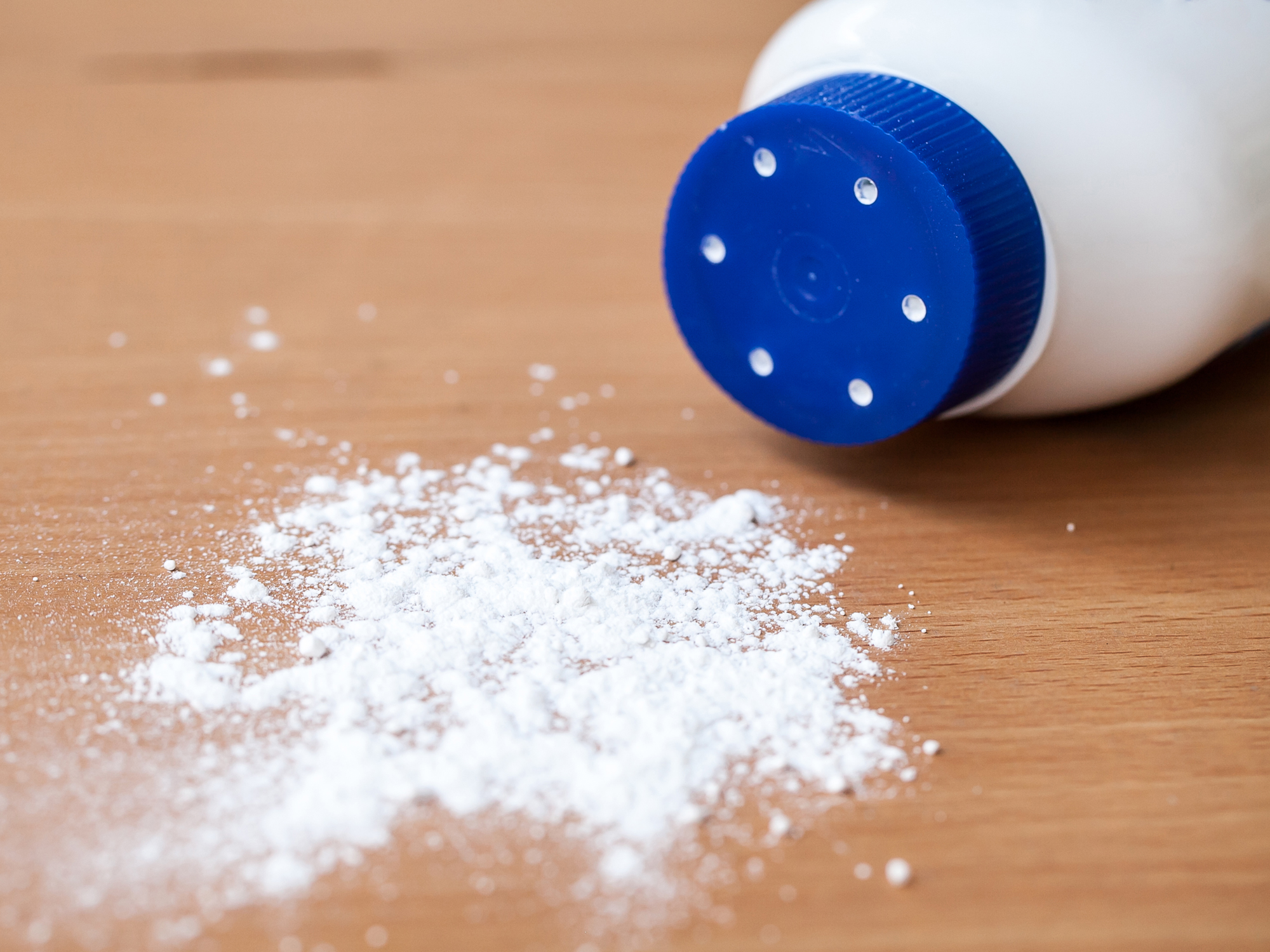Get Easy Health Digest™ in your inbox and don’t miss a thing when you subscribe today. Plus, get the free bonus report, Mother Nature’s Tips, Tricks and Remedies for Cholesterol, Blood Pressure & Blood Sugar as my way of saying welcome to the community!
What you ought to know about powder and cancer

About 14,000 women will die from ovarian cancer in the United States this year. The American Cancer Society lists almost twenty risk factors for this often-silent, fast-moving cancer.
Many of the risk factors are medical and genetic in nature. Some have to do with habits like smoking and drinking.
Then there’s talcum powder.
To quote from the ACS website:
“Some studies suggest a very slight increase in risk of ovarian cancer in women who used talc on the genital area …. For any individual woman, if there is an increased risk, the overall increase is likely to be very small.”
A 2000 study published in the Journal of the National Cancer Institute showed a “modest” increase in ovarian cancer among women who used talc on their genitals.
Tell me, ladies, are you willing to run a slightly increased risk of developing ovarian cancer? How about a modest or very small risk of being that one woman who dies?
And if this risk exists, don’t you think someone should have warned you long ago?
Johnson & Johnson, maker of the most widely-used baby powder, would disagree.
More about that in a moment.
The dangers of talc
There are two ways that talc may cause ovarian cancer.
First is the danger of the talc particles themselves. When talcum powder is used in the genital area, talc particles can travel up the vagina and reach the ovaries, causing the inflammation that encourages cancer.
Because talc particles can stay in the body for a long time, they may be setting the stage for ovarian cancer undetected for several years. Some experts estimate that one particle of talc would take eight years to dissolve.
Also, talc can appear in fibrous form. Although rare, the mineral can naturally break off as long thin fibers, similar to asbestos. These fibers cause irritation to the soft tissue of the vagina and reproductive organs.
Second is the question of asbestos, which leads us back to Johnson & Johnson.
Hiding the deadly truth from women
Asbestos is a fibrous, heat-resistant mineral that was widely used in home insulation until it was discovered that it causes lung cancer, chronic respiratory conditions and mesothelioma, a deadly form of lung cancer with a one-year survival rate of about 40 percent.
Talc in its natural state often becomes contaminated with asbestos, since the two often occur near each other in nature.
As Johnson & Johnson defends itself in over 5,000 lawsuits brought by women who developed ovarian cancer after using their baby powder, documents have been unsealed that reveal the extent of the company’s deception.
A document unsealed on September 6, 2017 revealed that an official at the company’s talc mine in Windsor, Vermont recommended “the use of citric acid in the depression of chrysotile asbestos” taken from the mine.
The mine’s director of research and development wrote, “The use of these systems is strongly urged … to provide protection against … materials presenting a severe health hazard and are potentially present in all talc ores in use at this time.”
Lost in translation
In 1974, owners of the Val Chisone mine near Turin, Italy, published a booklet marketing their talc. In it, they revealed the discovery of trace amounts of asbestos in their talc.
In an even more brazen move to hide the truth, a scientist at Johnson & Johnson persuaded the mine to stop distributing English-language versions of the booklet until company officials could rewrite it.
“The business threat … is that it can raise doubts on the validity of the documentation of purity and safety of talc.”
What you should do about it
Clearly, unless you’re willing to take a risk, it’s time to stop using Johnson & Johnson baby powder, or any powder with talc, as part of your feminine hygiene routine.
In fact, it’s probably best to stop using it completely.
So, what can you use instead?
Cornstarch is inexpensive and found in the baking aisle of your supermarket. It has the same consistency as powder, so it soaks up moisture just as well.
However, cornstarch is often derived from genetically-modified corn that has been saturated with the deadly herbicide glyphosate.
There are safer alternatives that are just as effective. Here are more than a dozen to choose from. You can also look for commercial powders that use these ingredients as their base, rather than talc or cornstarch.
Editor’s note: Discover how to live a cancer prevention lifestyle — using foods, vitamins, minerals and herbs — as well as little-known therapies allowed in other countries but denied to you by American mainstream medicine. Click here to discover Surviving Cancer! A Comprehensive Guide to Understanding the Causes, Treatments and Big Business Behind Medicine’s Most Frightening Diagnosis!
Sources:
- Johnson & Johnson alerted to risk of asbestos in talc in ’70s, files show — Chicago Tribune
- The Association Between Talc Use and Ovarian Cancer — Epidemiology
- $417 Million Awarded in Suit Tying Johnson’s Baby Powder to Cancer — The New York Times
- Can Using Baby Powder Down There Really Cause Cancer? — health.com
- $110 million verdict for plaintiff in fifth talcum powder cancer trial in St. Louis — St. Louis Post-Dispatch












